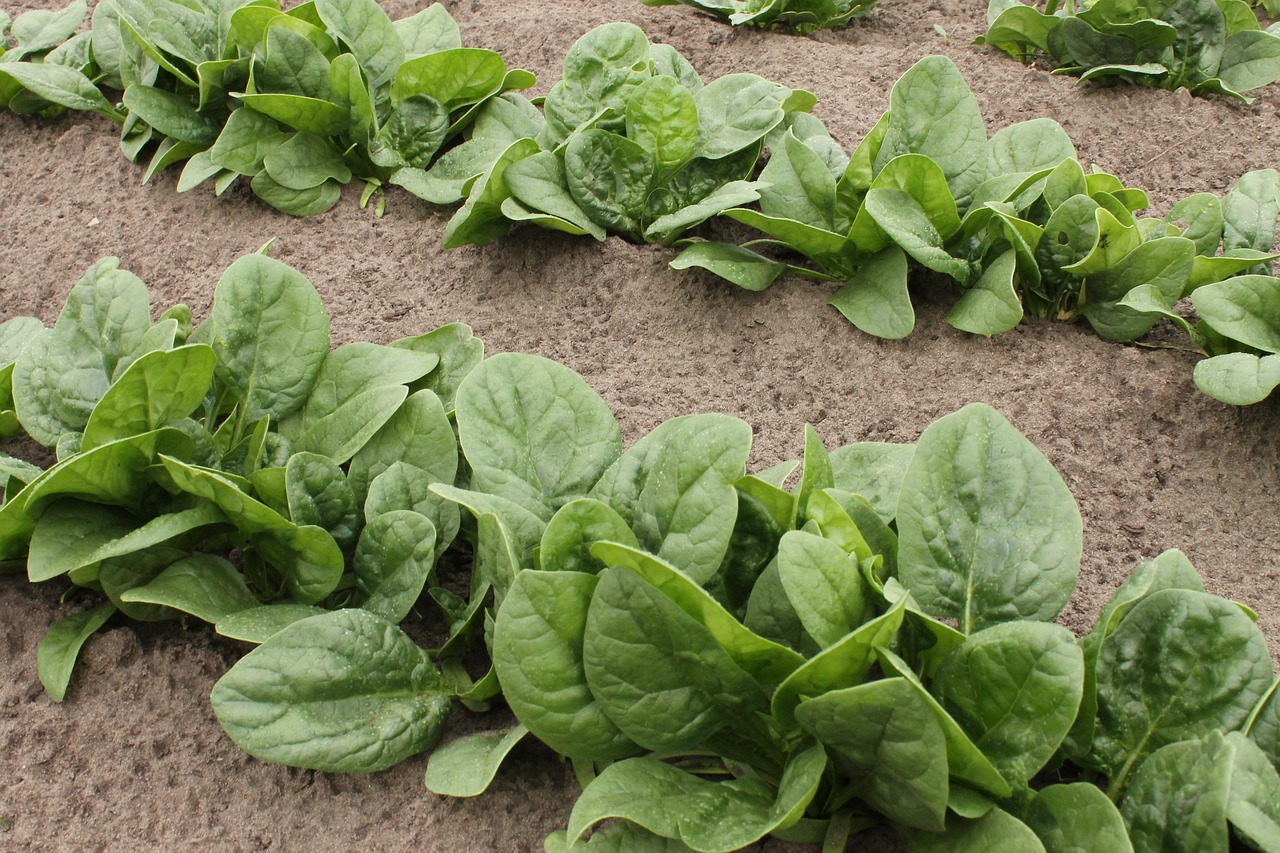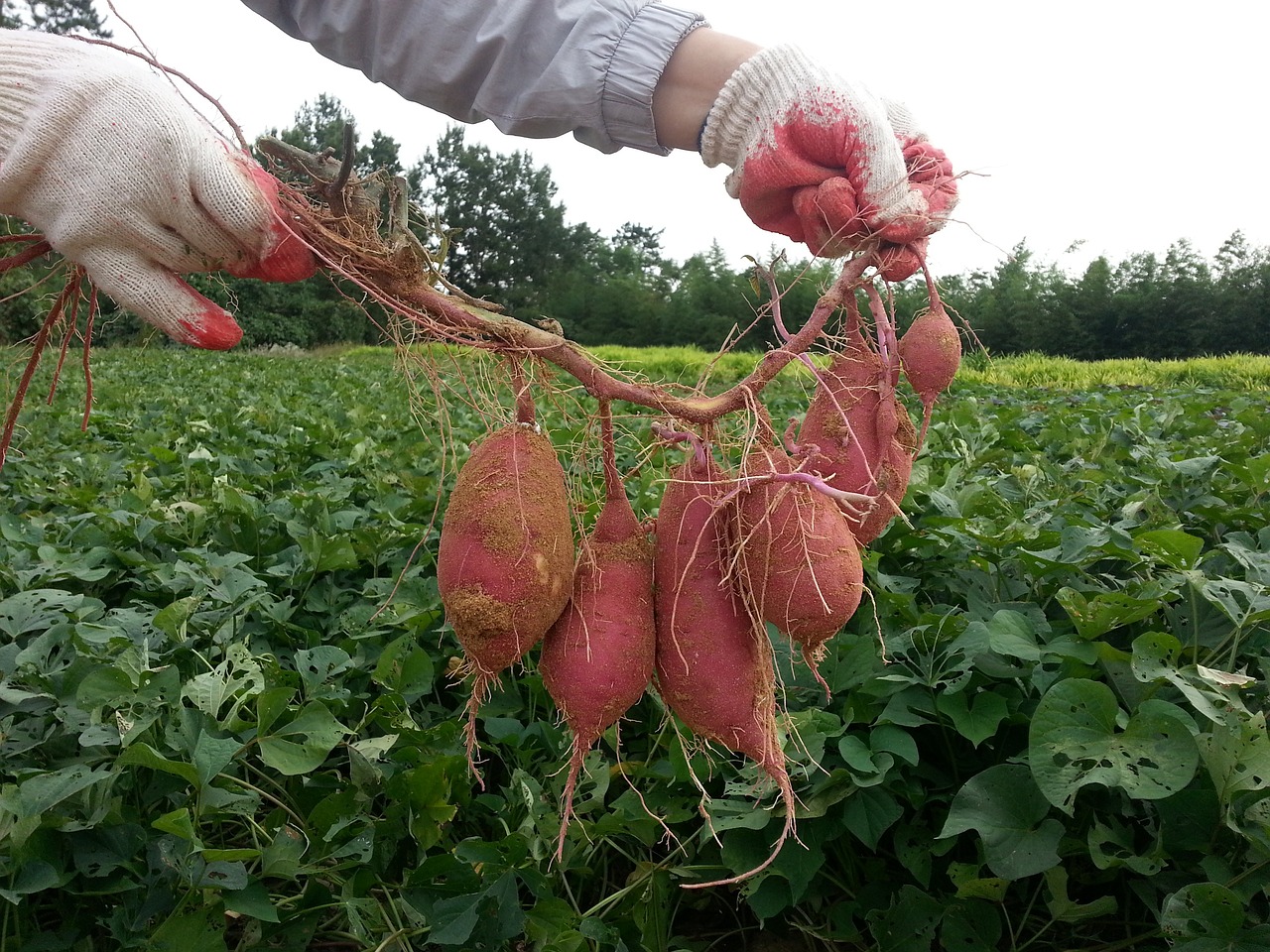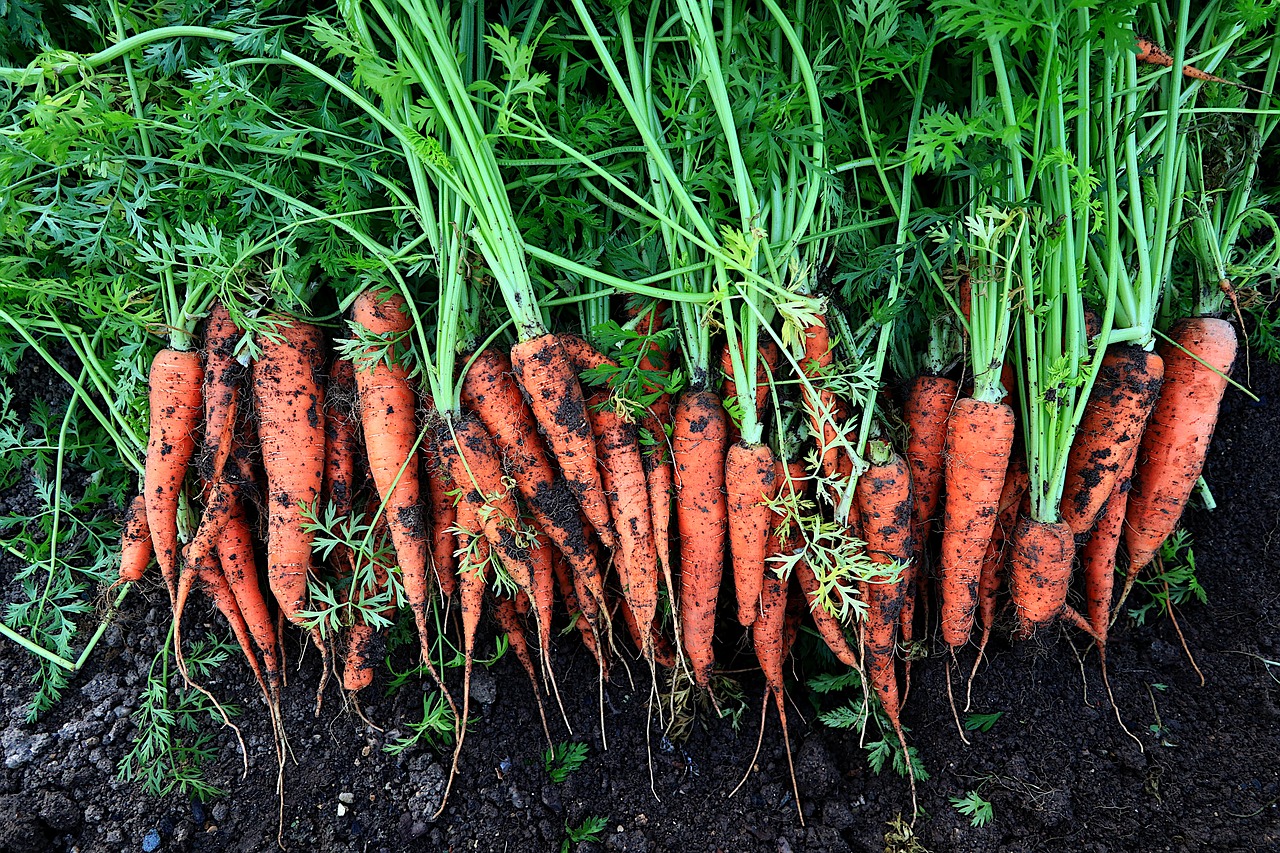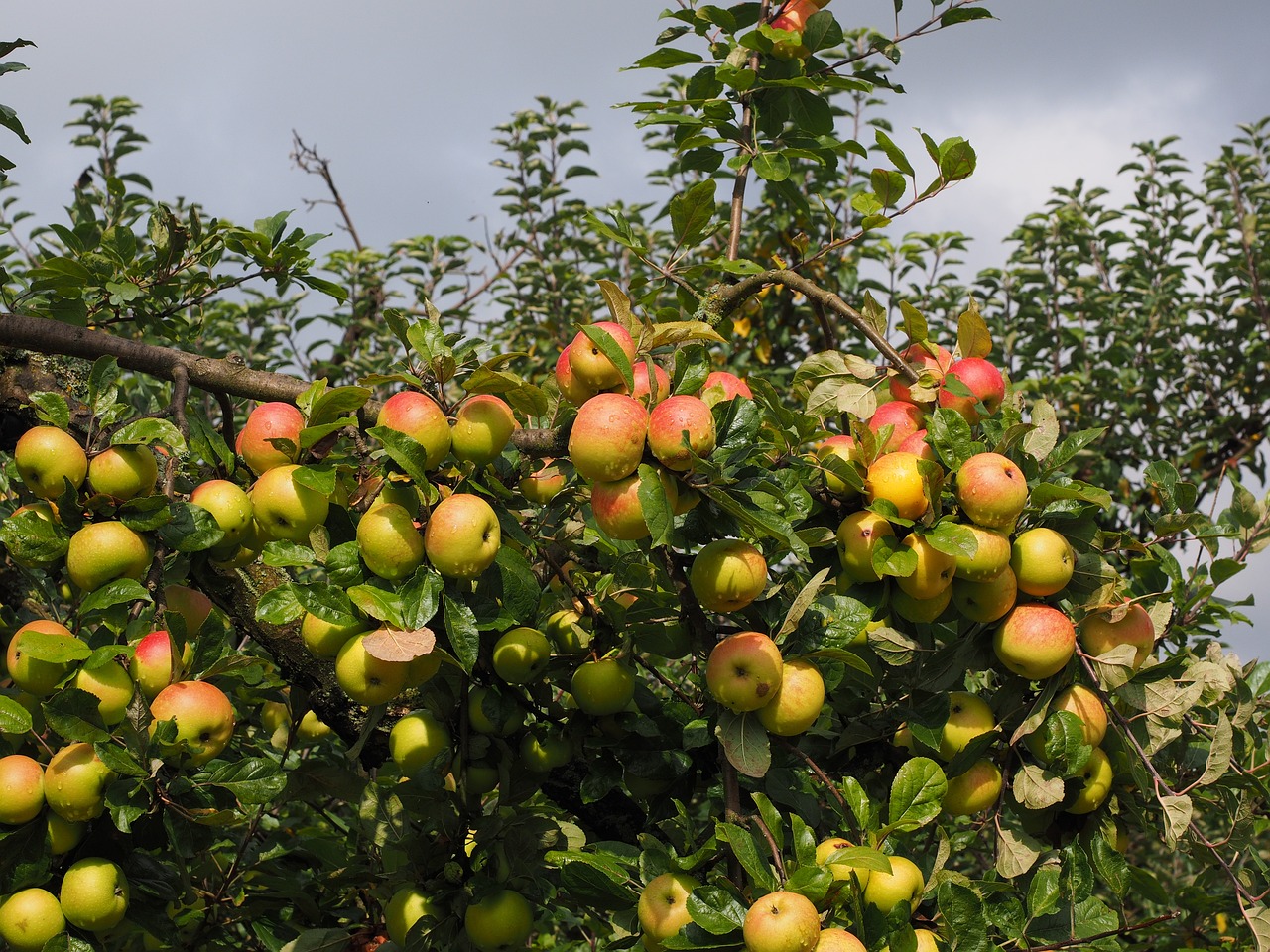Spinach is a cool weather loving crop that is easy to grow and therefore a good choice for beginner gardeners. Plants can be grown in garden beds or planted in containers with well-draining soil.
Spinach is a highly nutritious crop containing many vitamins and minerals that have various health benefits, therefore, a valuable addition to a home garden.
Description
Spinach is an annual plant belonging to the amaranth family, Amaranthaceae. It is grown for its leaves which are either eaten raw in salads or cooked.
Spinach plants grow in rosettes of leaves, from which a seed stalk emerges, which bears flowers that produce small, dry fruits.
Spinach contains high amounts of oxalates which when consumed continuously, overtime may lead to development of kidney stones. Oxalate levels in spinach can be reduced by steaming or boiling leaves.
| Botanical name: Spinacia oleracea | Propagation: Seeds |
| Common name: Spinach | Soil type: Loam, sandy loam |
| Family: Amaranthaceae | Soil pH: 6.5-7 |
| Plant type: Annual | Temperature: 35-370F |
| Hardiness zones: USDA zones (3-9) | Light: Full sun to partial shade |
| Mature size: Up to 1ft tall, | Spacing: 1-4in. between plants |
| Flower color: Yellow-green | Pollination: Wind |
| Leaf color: Dark green | |
| Time to maturity: 38-50 days | |
| Native area: Asia |
Temperature requirements
Spinach requires cool temperatures for growth, between 35-370F. This is usually during spring and early fall.
In hot temperature conditions, spinach plants grow tall and bloom (a process called bolting), when days are longer than 14 hours.
Spinach is cold hardy and once established, it can withstand temperatures of up to 200F and can therefore be overwintered.
Soil requirements
Spinach grows best in well-draining loam soil that is rich in organic matter with pH of 6.5 to 7. Conduct a soil test before planting so that you can adjust pH as required.
Light/Sun requirements
Spinach grows best in full sun but can tolerate partial shade.
Types of Spinach
Spinach is divided into savoy, semi savoy and smooth leaf types.
Savoy spinach
Savoy spinach grows best in cold weather compared to other types of spinach. Leaves are deeply crinkled and have a low growing habit, therefore require a lot of cleaning after harvest, especially if soil splashed on leaves. Savoy spinach varieties include Regiment and Bloomsdale.
Semi savoy spinach
Varieties of semi savoy spinach grow more uprightly, and their leaves are less crinkled compared to savoy spinach, making cleaning easier.
Smooth leaf spinach
Varieties grow smooth, flat leaves that are much easier to clean. Varieties include Red cardinal, Malabar spinach, Space and others.
How to plant Spinach
Prepare your garden by tilling the garden area, remove all existing vegetation and big stones and uproot perennial weeds.
Work the soil up to 6in. for proper growth since spinach has a tap root system.
Add 1-2 in. layer of aged compost manure or rotted animal manure and mix well.
Work the soil to make a raised bed(s) for growing spinach.
Plant spinach seeds, 1/2 in. deep into the soil and 1-4 in. apart in rows that are 6-8in. apart.
Cover seeds with soil and water to provide moisture.
Spinach seeds take 7-14 days to germinate. Use seeds that have not been in storage for long, as older seeds have lower germination rates.
Growing Spinach in containers
Spinach grows well in containers, as long as all required conditions for growth are in place.
Select a container that has drainage holes underneath and enough spacing to accommodate the plants.
Fill the container with well draining ordinary potting soil and sow seeds in the container.
Ensure that the soil is kept moist at all times.
How to Care for Spinach
Watering: Always ensure that spinach plants are kept moist all the time. During dry seasons, water 2-3 times per week.
Weeding: Spinach plants grow fibrous roots, which are shallow and cannot compete favorably with weeds. Remove weeds by uprooting or using a hoe while taking care not to damage spinach roots.
Mulching: Spinach will benefit from a layer of mulch as it helps to retain moisture and reduce weed growth. As mulch rots, it also provides additional organic matter to the soil which benefits the plants. Use dry grass or some other appropriate mulching material.
Fertilizing: Fertilize spinach with nitrogenous fertilizer to boost growth of foliage.
Overwintering Spinach
Spinach plants for overwintering should be grown in late summer or early fall.
Let the plants grow to about 2in. before frost comes.
Plants will die back from frost, after which you can cover them with 2-4in. layer of mulching material in form of dry grass, straw or some other mulching material.
Spinach leaves will regrow in spring.
Harvest spinach leaves and use with your favorite dishes.
Harvesting Spinach
Spinach is ready for harvest when plants have developed 5-6 leaves, which is 50-70 days after planting from seed, depending on cultivar.
At this point, leaves are still tender and therefore good for cooking.
Harvest spinach during morning hours before leaves have wilted from the sun. Use a sharp knife to harvest the entire plant by cutting just above ground level.
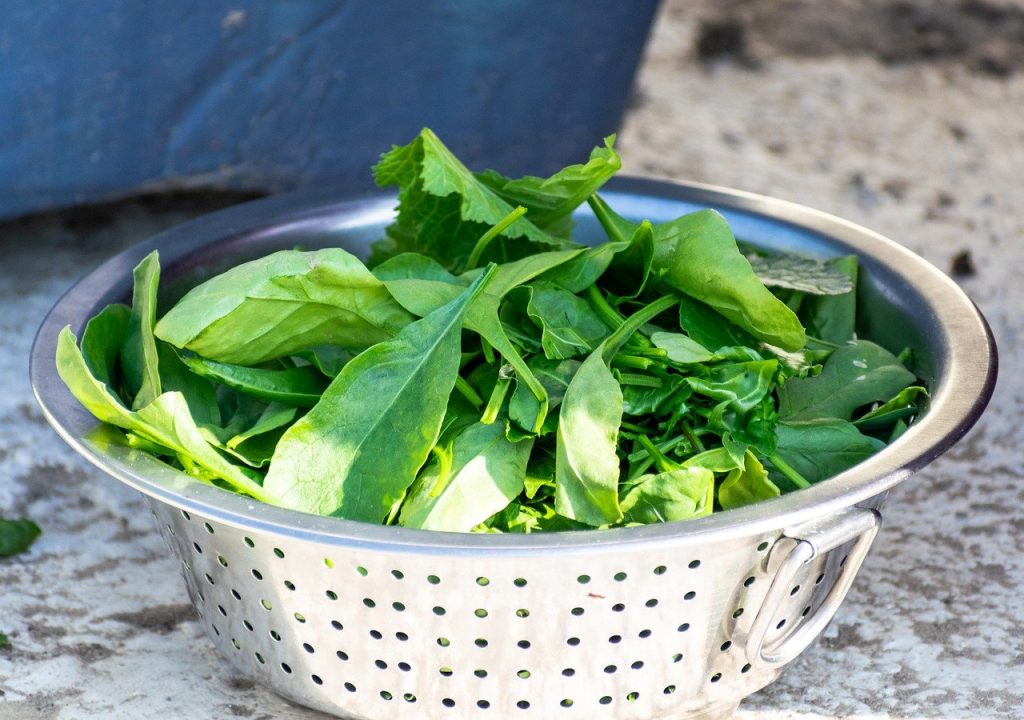
Storing Spinach
After harvesting, wash off any dirt from the leaves, leave them to dry and place them in a plastic container or a resealable bag. Lay dampened paper towels over spinach and seal the container.
Store in a refrigerator at 00C and 95-100% relative humidity. Spinach will keep fresh for two weeks.
Common problems
Pests include spinach leaf miner, aphids, flea beetles and leaf hoppers. These mainly feed on foliage and cause loss.
Control: Use prescribed pesticides or physical traps for pests.
Common diseases include:
Downy mildew: A fungal disease which causes a yellowish area to develop on the upper side of leaves and gray mold on the underside. It is caused by damp conditions and poor aeration which promote fungal growth.
Control: Provide enough spacing between plants and practice crop rotation.
Spinach blight: A viral disease transmitted by aphids that carry cucumber mosaic virus. Leaves become mottled, turn yellow and later on die.
Control: Grow resistant varieties, control aphids and destroy affected plants to control spread.
Best companion plants to grow with Spinach
Beans, peas, carrots, onions, radishes, cauliflower, strawberries and lettuce.
Worst companions
Corn, pumpkins, sunflower, potatoes and fennel.

